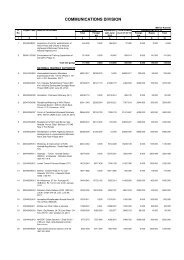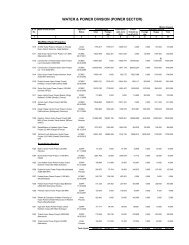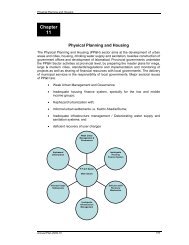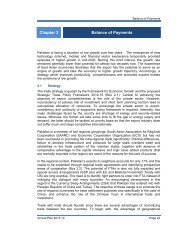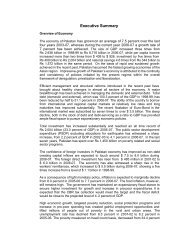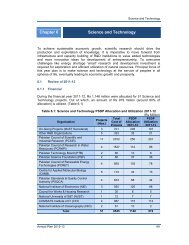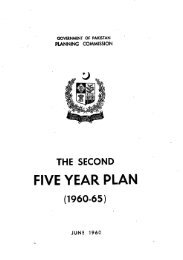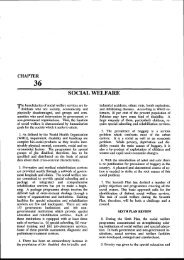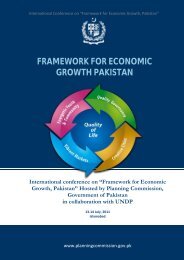Manual for Development Projects - Planning Commission
Manual for Development Projects - Planning Commission
Manual for Development Projects - Planning Commission
Create successful ePaper yourself
Turn your PDF publications into a flip-book with our unique Google optimized e-Paper software.
Chapter-7<br />
activities consume time and other organizational resources. Activities are represented by arrows.<br />
We will read the above network in the following way:-<br />
(a) The five circles represent the five events, namely event Nos. 1,2,3,4 and 5.<br />
Page 7 of 26<br />
(b) The five arrows represent the five activities, namely: activity (1-2); activity (2-4); activity (1-3);<br />
activity (3-4) and activity (4-5). Note that each activity is between two events, namely, the starting event<br />
and the ending event. In case of activity (1-2), the starting event is event No. 1 and the ending event is<br />
event No. 2. In case of activity (2-4), the starting event (which is the ending event of activity 1-2) is event<br />
No. 2 and the ending event is event No. 4. Also note that events are represented by single numbers (i.e.<br />
event No. 1) while activities are represented by two numbers (i.e. activity No. 1-2).<br />
(c) The numbers beside the arrows represent the duration of activities. It could be in days, weeks, or even<br />
months.<br />
(d) The network indicates that be<strong>for</strong>e activity (2-4) could start, activity (1-2) should have been completed.<br />
In other words, activity (2-4) is "constrained" by activity (1-2). This is also true in case of activity (3-4)<br />
and activity (1-3). The network also indicates that activity (4-5) is constrained by the completion of both<br />
activity (2-4) and activity (3-4).<br />
(e The network tells us that activities (1-2) and (1-3) can be done simultaneously. In other words, these<br />
activities are not "constraints" to one another. This is also true in case of activities (2-4) and (3-4).<br />
(f) By tracing all arrows leading to the terminal event (event No. 5), we discover that there are two<br />
"paths". One path is through activities (1-2), (2-4) and (4-5) and the second path through activities (1-3),<br />
(3-4) and (4-5). Assuming that the time duration is in days, the first path will take 29 days (10+11+08)<br />
and the second one would take about 36 days (12+16+08).<br />
(g) The "critical path" is the path that has the longest total duration. In our network, the critical path is<br />
that one that would take about 36 days. Consequently, activities (1-3), (3-4) and (4-5) are "Critical<br />
Activities". The critical path total duration corresponds to the completion time of the whole project. In<br />
our network, the project is expected to be completed in 36 days. A sample of PERT/CPM Chart is<br />
enclosed at Annexure-XIX.<br />
http://hd2/pc/popup/ch7_p.html<br />
9/23/2010




